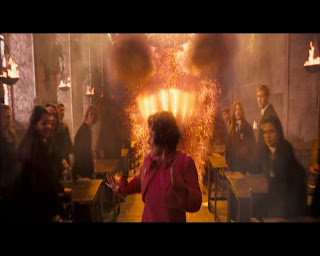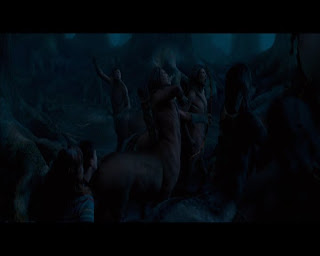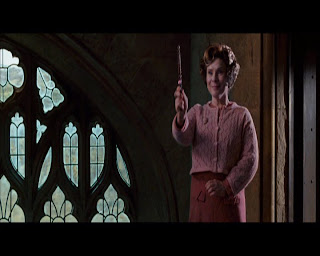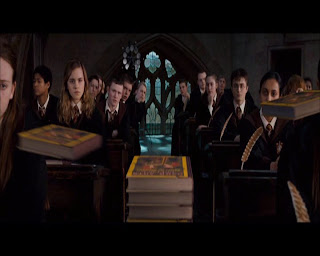



Here are some notes I made whilst reading this book: (It will be used in my catalogue as I regard this source as an extremely important!)
From epic landscape to sumptuous interior, from visions of space, aliens and future cityscapes to explosive action and adventure; expansive vistas spread out across the width of the big screen, their presence magnified by the aural impact of multichannel sound. Everything is larger than life; not real but hyper real, leading us into the imaginary worlds of the cinema but also leaving us to sit back and wonder at its creations.
Growing demand for products that can be further exploited in multimedia forms such as computer games and theme park rides.
Narrative and spectacle can work together
Spectacle may disrupt narrative. May take on the character of ‘cinematic excess’ as Kristin Thompson puts it.
Spectacle, the production of images, has long played an important part in the creation of popular entertainment, from contemporary and early cinema to magic lantern shows, theatre and traditions of religious rituals.
Offer a range of pleasures. The enjoyment of larger than life.
Help to move a plot forward
The targeting of different films to different audiences was heightened by the advent of the ratings system in 1968. the blockbuster format was to create a much wider audience for certain films, an industrial strategy to give these attractions a large viewing. Advertising and promotional strategies baseda round the attempt to sel blockbusters as special events that everybody is going to see. To miss them, therefore, is to miss out, to be excluded.
Spectacular is sold on the basis of its sheer size and impact, its physical scale of image and multi channel sound: its function specifically for attraction. The viewer is sold the illusion of being transported into the world on screen and of experiencing the drama with the characters.
The developments of wide screen digital television, dvd and surround sound systems
‘ a series of blows to the consciousness and emotions of the audience’
Barker and Brooks interview action fans and their findings describe as ‘ the joys of being “done to” by a film’:
One whole way of talking about films describes a wish to be physically affected by them: typical wanted experiences are being knocked out of my seat, making me jump, hitting me between the eyes. This is driven by a demand of pace. A bad film is a slow film that sends you to sleep. A good films of this kind doesn’t just keep you awake, it shocks you awake repeatedly”
Theme park attractions claim to take us into the physical and experimental space of movies. Computer games based on films promise an interactive engagement with something like a world on screen. The latest in giant IMAX engulf us in vast encompassing images. These are the trends in contemporary
The direction that I am taking with this investigation is exploring the elements of the fantasy franchise.
I have discovered the main reason for these type of films to become a success is from the powers of CGI and special effects. From the media magazine article “CGI pest or pesticide?” explores the positives and negatives of CGI. It almost suggests the competition of CGI between films and how much they can benefit as it can be seen as an indictor of a big budget. However, there can be moments where CGI can be used as an extreme or OTT, which I believe happens in Lord of the Rings quite a lot, which can be used as evidence.
I also found that different types of fantasy films, including my focus films, fall under different fantasy categories. It places Lord of the Rings’ in the “High Fantasy” band and Harry Potter and Narnia in the “Contemporary Fantasy” band. So I have explored how my fantasy films have appealed towards different target audiences. Including the work on the Genre theory (from Genre and
Notes to make in presentation
Harry Potter: Teen audience – elements of Action, Romance, High School
Lord of the Rings: Male blockbuster audience- elements of Action, War
Narnia: Child/Family audience- elements of Action and Child road style movie
This route showed me that fantasy films appeal to a wide audience, which makes them very popular within the film industry and therefore the fantasy genre can hold many expectations and pressures.














The firework scene is another big CGI moment as it is entertaining to watch. There are many low angles to create a sense on how explosive this scene is. It also creates awe as the audience can see all the amazing colours and it looks realistic and sounds it too. It makes the impossible possible with CGI.










The medium shots of the Weasley twins sitting on the bench with the young boys, who are testing their magical sweets is filled with comedy. Comedy mixed within a magical school is the appeal with this film. This is pure mischief and entertains the audience with the effects from the props. CGI plays around with a boy’s chin growing, which becomes fascinating to watch as you witness magic.
Also, the off-screen diegetic sound of Ron and Hermione talking about their O.W.LS causes the cut to the medium long shot of the pair. Indications of romance blossoming can be seen here as Ron jokingly says “I love you Hermione” and their body language suggests there is an attraction, which causes fans and teens to like this film as they can relate.
This film involves ordinary characters which look realistic from their shirts, jumpers and trousers. They suggest the unbelievable can happen to anyone whether you are a ‘muggle’ or not. However, the slightly low key lighting still indicates the characters are in a magical environment.
In all of my fantasy focus films; there have been massive locations with giant swoops. I was able to witness one in Harry Potter as well.
Massive swoops around
The extreme long shot of Harry walking to Hagrid’s hut creates his character to be small, vulnerable and lonely. This creates a sudden mood of sadness. Also, the Harry’s voiceover of the letter to his Godfather reveals why he is so sad and tells the audience what he is feeling.
The composition of this frame is wonderful as Harry is dressed in black and Hedwig being a white owl, suggests Hedwig is Harry’s only sign of hope on delivering that letter to his godfather. The mise en scene looks dry due to the brown grass and tiny bits of greenery can be seen portrays the loneliness and being vulnerable. The long narrow pathway suggests Harry has a long way to go to find happiness and has to face struggles to get there.
The soundtrack supports this mood as the wind instruments echoes the sadness, reflection and longing to be loved. This film is very realistic for the audience to watch as there are many comical moments, but there has to be serious ones as well.















Narnia took an ordinary prop: the cupboard and turned it into a magical port for Narnia. Well, Harry Potter also uses this concept as well. They use a telephone box. The extreme long shot allows the audience to witness the magic of the port to the Ministry of Magic as Mr Weasley and Harry step inside. A comical soundtrack is played as it becomes amusing to watch as it’s extraordinary.
When Mr Weasley and Harry arrives at the Ministry of Magic, there are many extreme long shots at high angle and eye line matches to allow the audience to take in the enormity of wizards and witches’ population. Wizards and witches arriving by floo powder through the fireplaces, which CGI is used with sound effects. Also, the décor within the Ministry of Magic is extremely detailed as there is wooden floor, green and black tiles and golden framed fireplaces. It looks like something out of a dream.